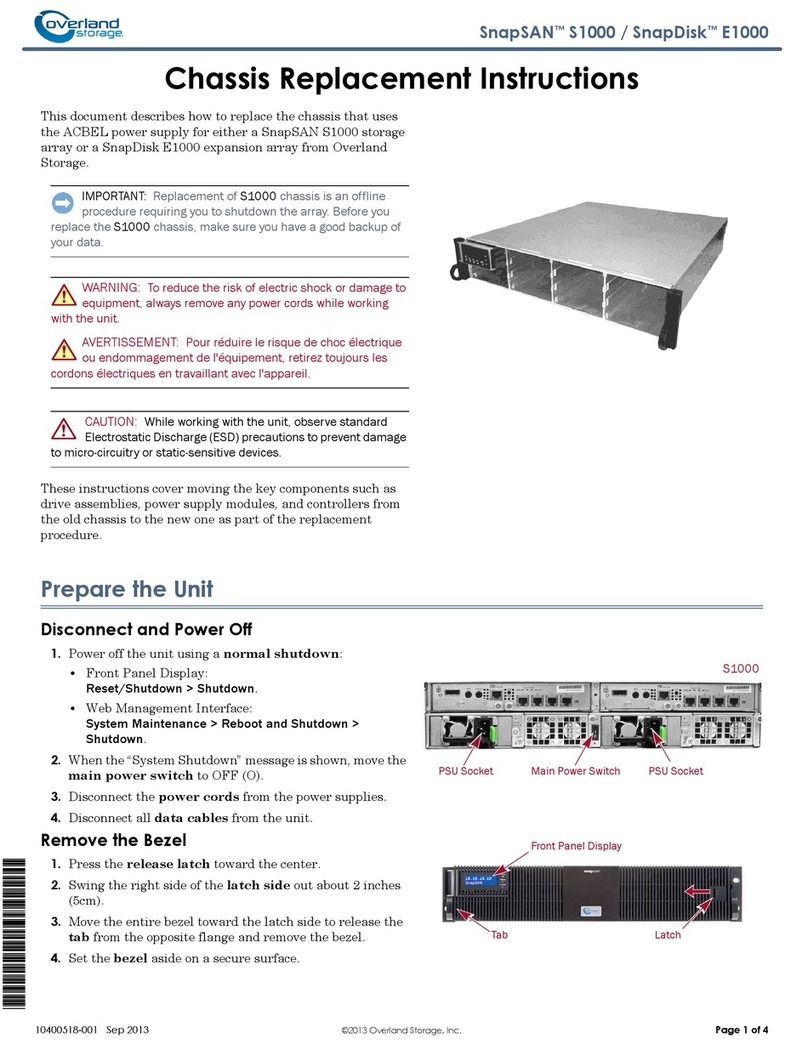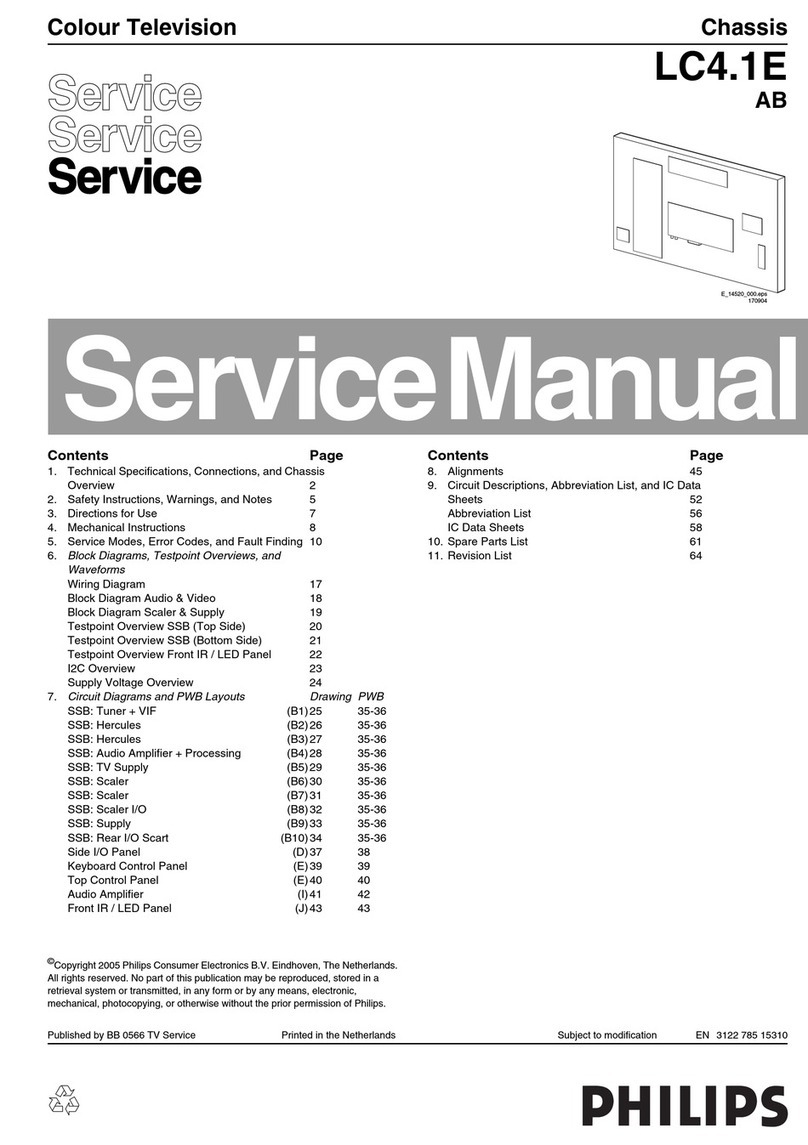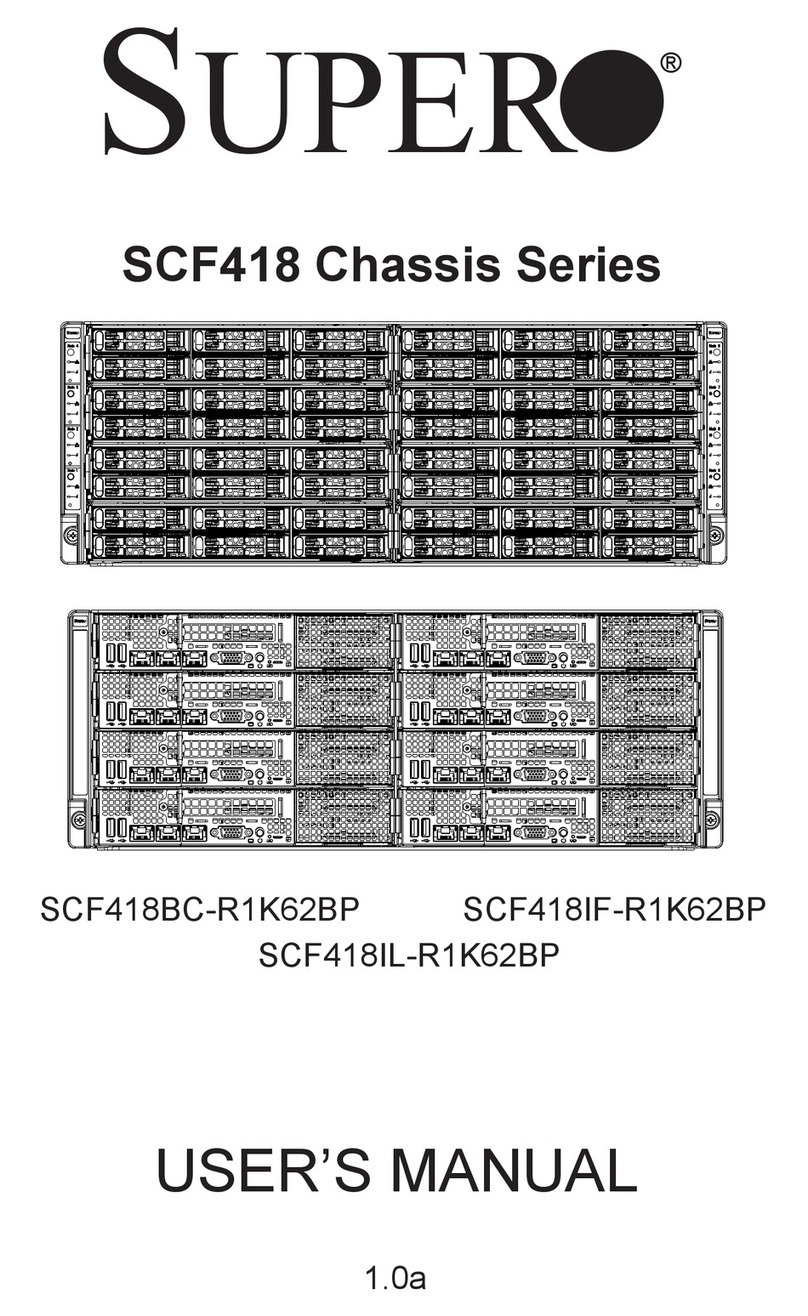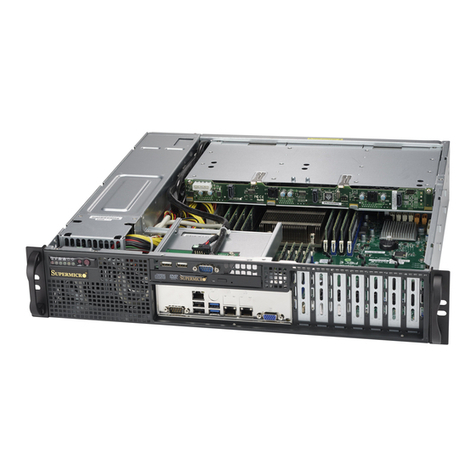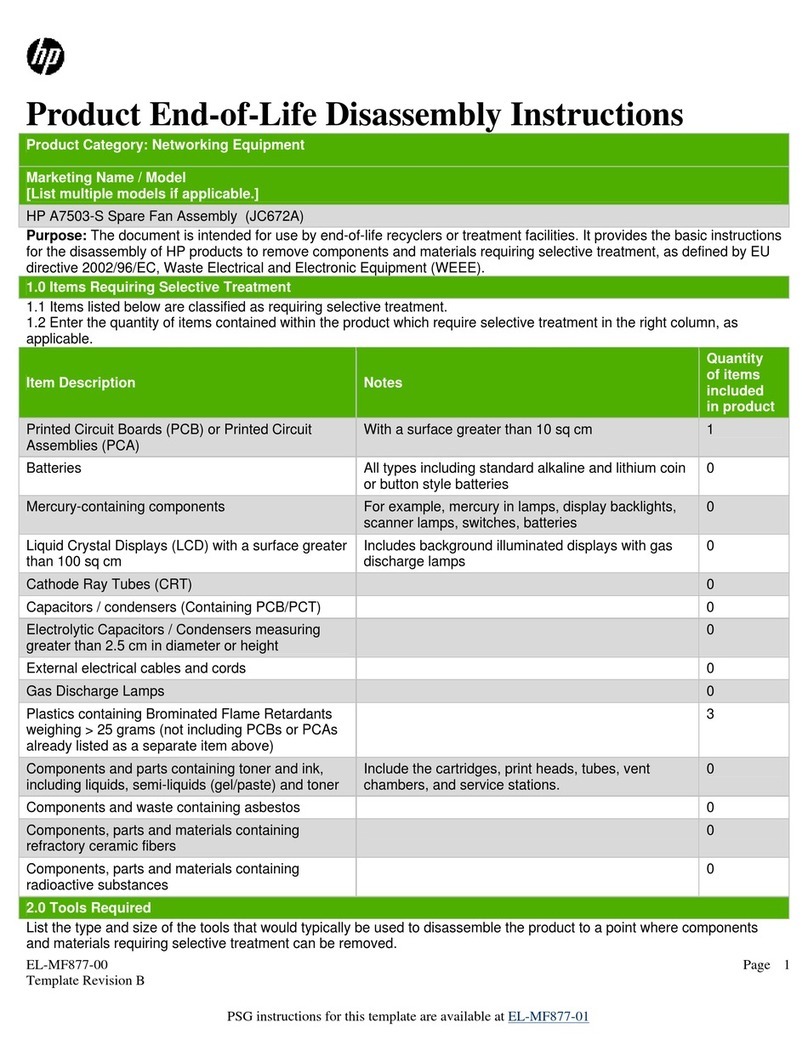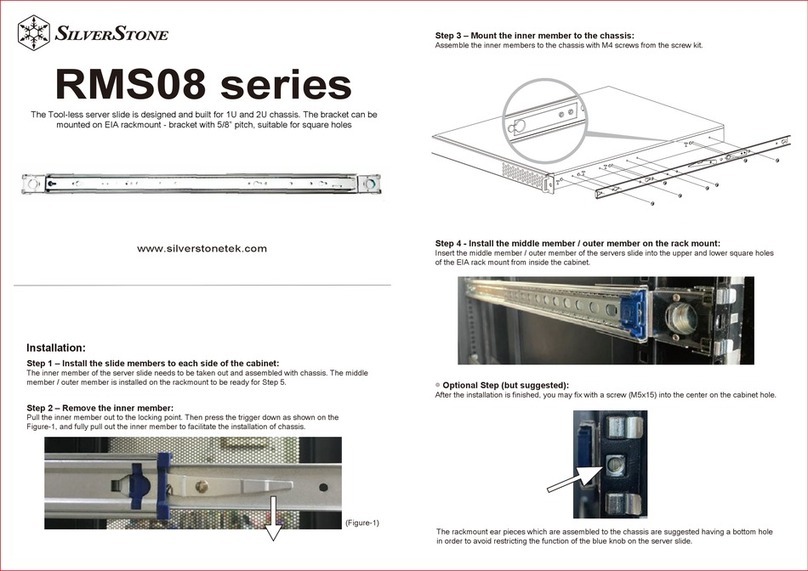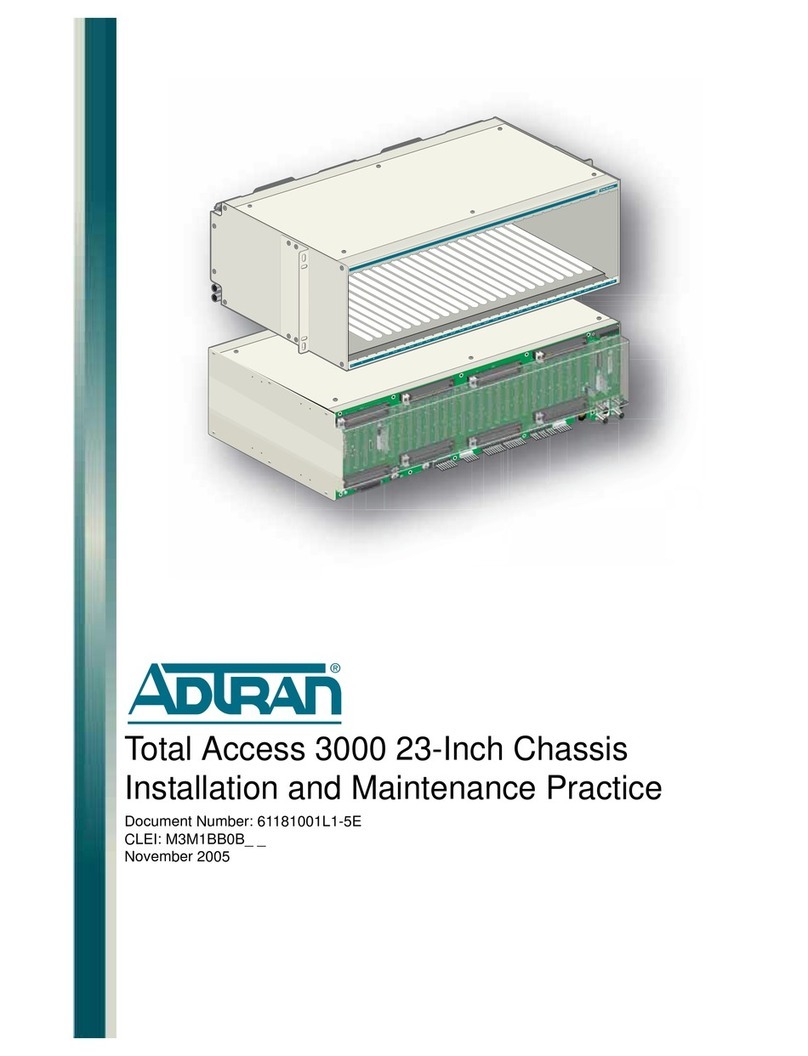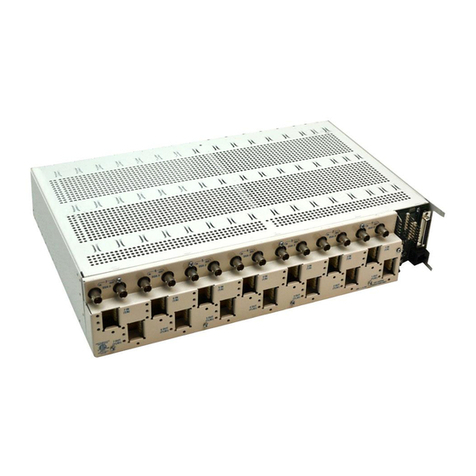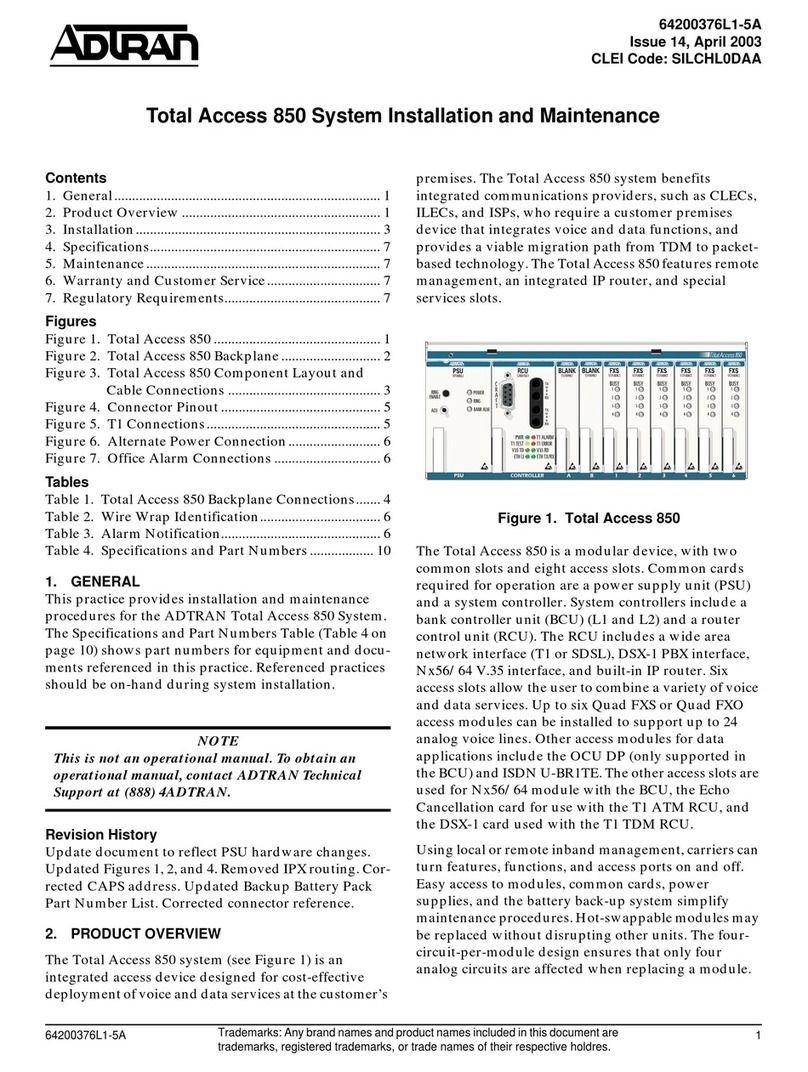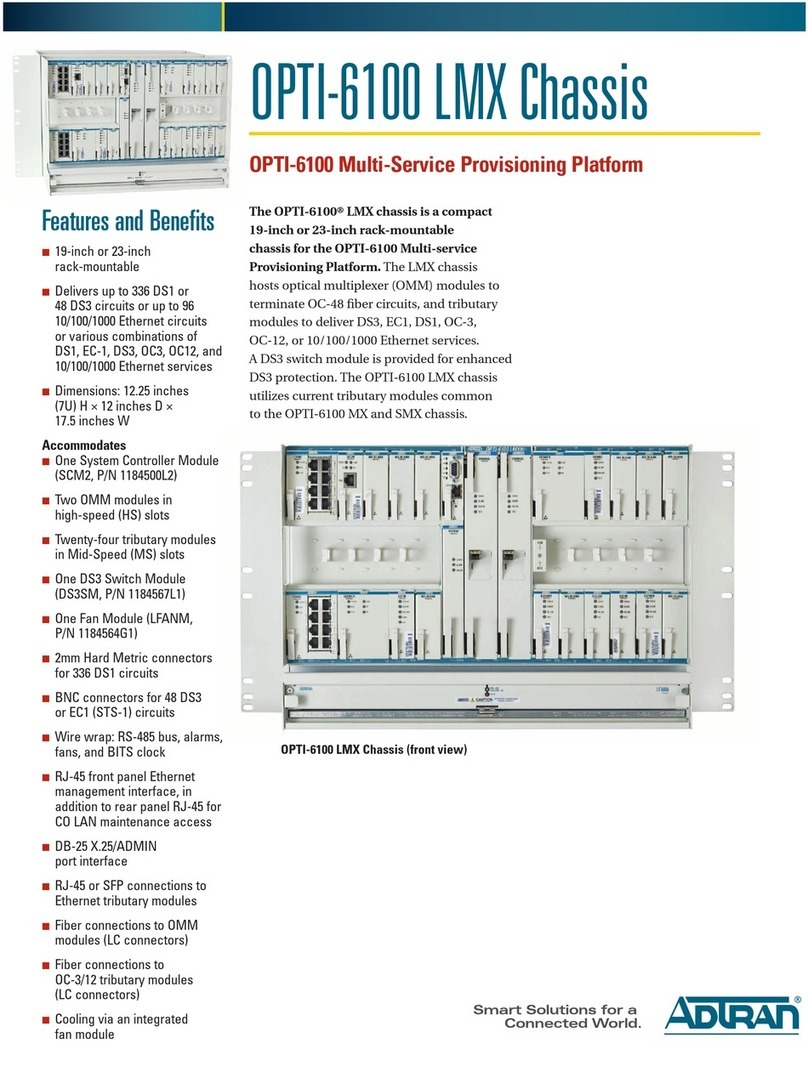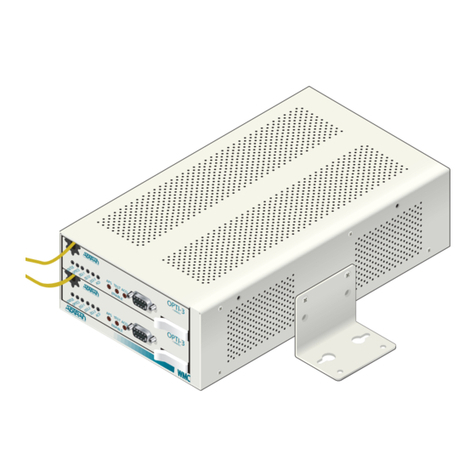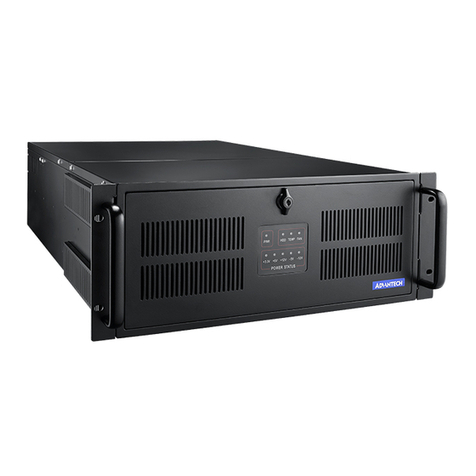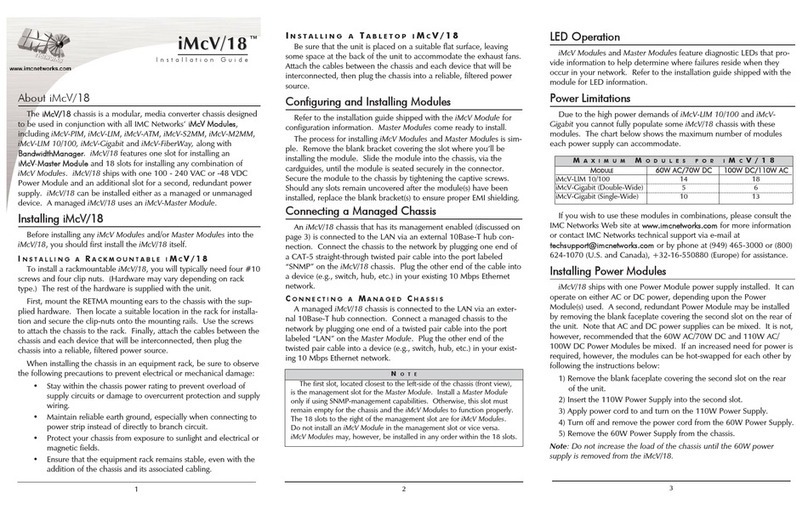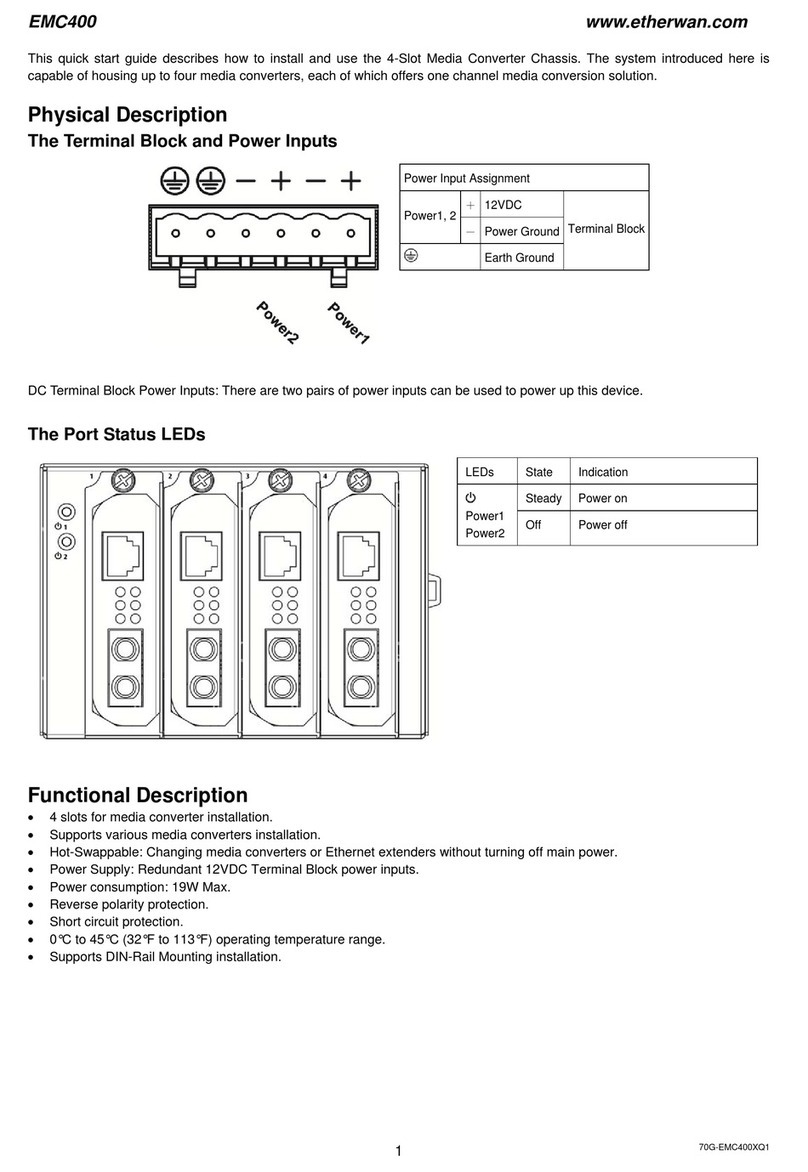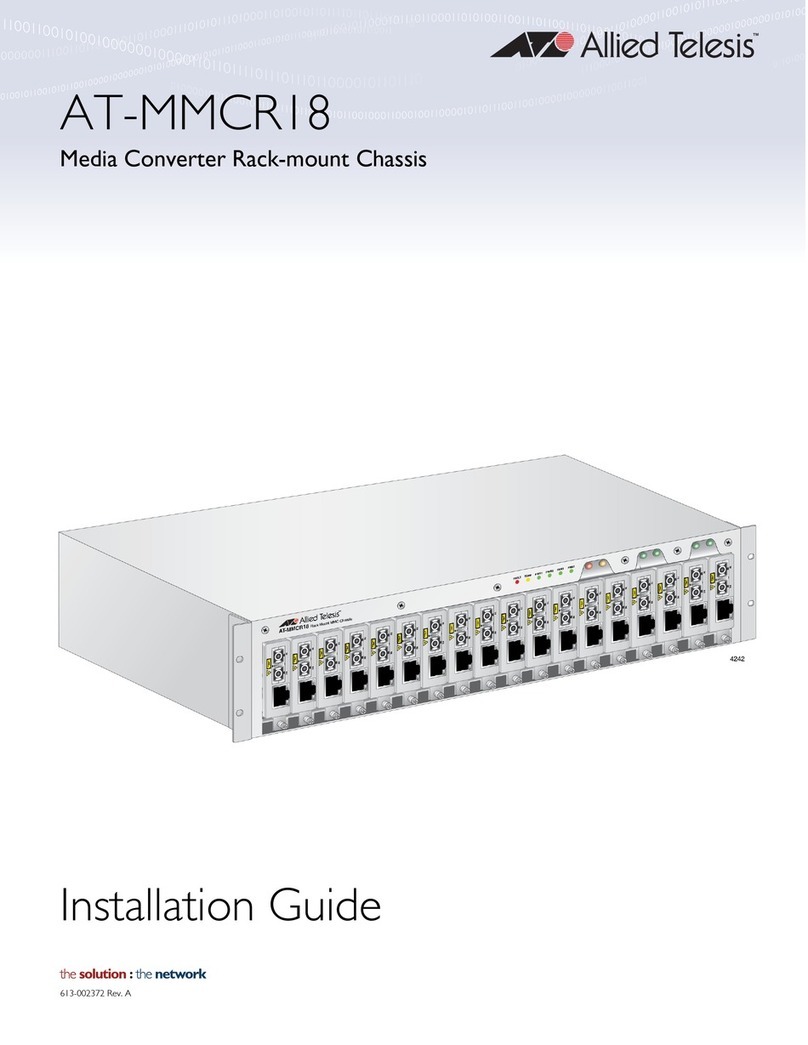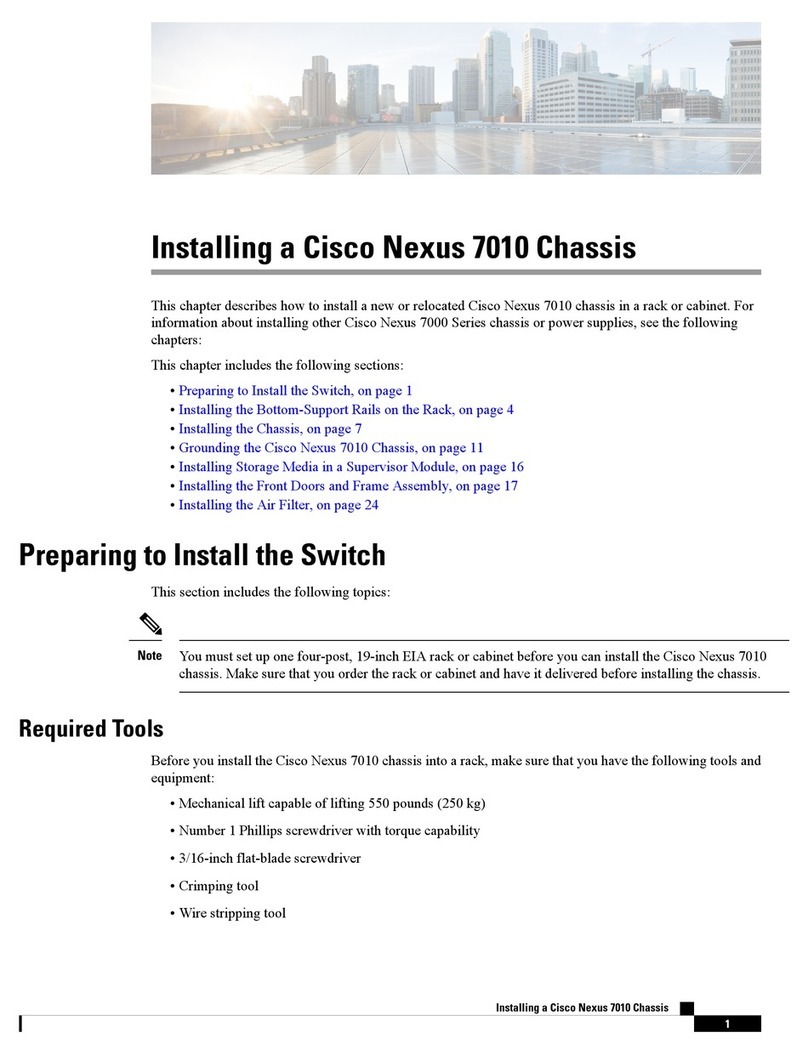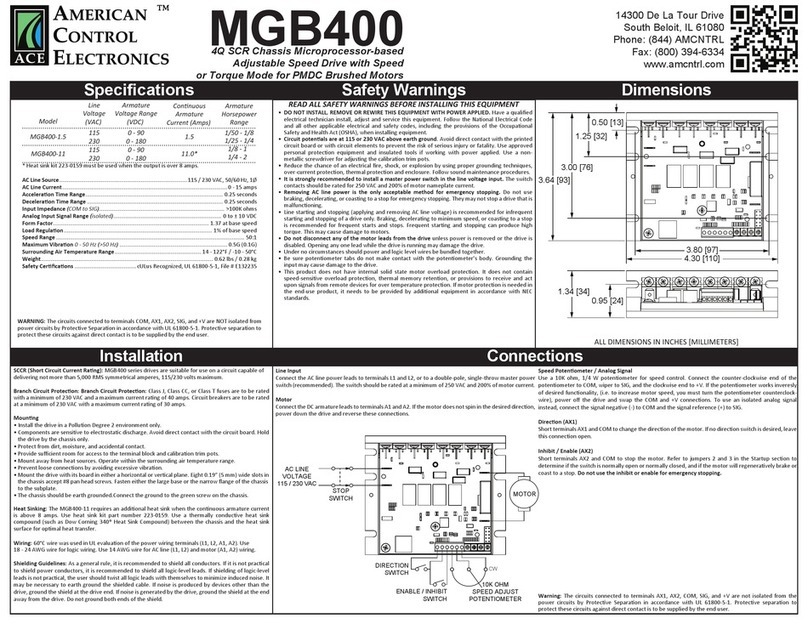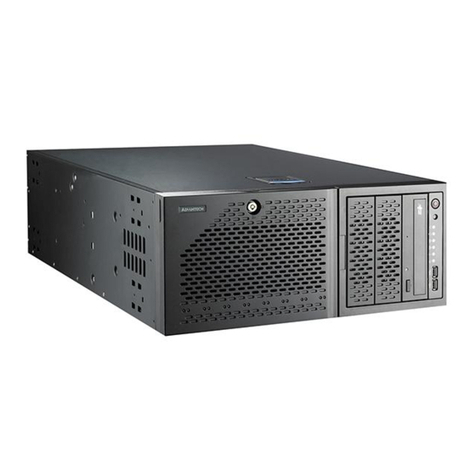
2 Issue 4, February 2009 61180001L1#S-5D
Common Modules
The Common Modules supported by the Total Access
1500 are described below.
PSU/RGU
The Power Supply Unit/Ring Generator Unit (PSU/
RGU) receives –48 VDC from an external source to
provide all necessary voltages required by the other
common modules and channel units. Two PSU/RGUs
may be installed to provide fully redundant operation.
Through switch mode operation, either PSU converts
the incoming –48 VDC to regulated +5 VDC, +3.3
VDC and unregulated –7.5 VDC, –24 VDC, and –48
VDC for distribution to the other modules. Ring voltage
circuitry within the PSU generates 105 Vrms nominal,
20 Hz ring voltage for distribution to the channel bank’s
voice cards. Ring voltage is disabled by removing the 5-
amp GMT front panel fuse labeled 20Hz. The PSU/
RGU does not require provisioning prior to insertion
into the channel bank.
SCU
The System Controller Unit (SCU) provides network
management capability for the channel bank. The SCU
is used to provision, test, and determine status for any
module in the channel bank. It is also available in COT
and RT versions with Mechanized Loop Testing. The
front panel has a craft interface, test equipment timing
output, alarm and status indicators, plus an ACO (Alarm
Cut-Off) switch.
LIU
The Line Interface Unit (LIU) terminates up to 4 T1
lines, with a separate T1 that is included for protection
switching with the Quad LIU or two T1 lines with the
Dual LIU. The LIU generates control signals and clocks
used by the channel units, and controls both manual and
remotely initiated T1 loopbacks. It detects alarm condi-
tions and reports the alarm status to the SCU. The front
panel has a dual bantam jack for T1 test access, status
LEDs, and a STATUS pushbutton.
Access Modules
Total Access 1500 incorporates a complete array of
local loop access technologies into an integrated intelli-
gence system. Most access modules occupy one slot in
the Total Access chassis.
The access modules supported by Total Access 1500 are
listed in the Total Access 1500 System Manual
(P/N 61180001L1#S-1). Refer to individual Installation
and Maintenance Practices and Job Aids for detailed
information on installation, testing, operation, mainte-
nance, and troubleshooting.
WARNING
If using two (redundant mode) List 2 Quad
LIUs (P/N 1180109L2) in the Total Access
1500 chassis, do not metallically connect the
T1 (DSX-1) to interfaces that connect to the
Outside Plant or its wiring. These interfaces
are designed for use as intra-building inter-
faces only. The addition of Primary Protectors
is not sufficient protection to connect these
interfaces metallically to OSP wiring.
It is permissible to connect the T1 (DS-1)
interface metallically to the OSP if only one
LIU (non-redundant mode) is to be used at any
time in the Total Access 1500 chassis.
Compliance Codes
Table 1 shows the Compliance Codes for the Total
Access 1500 Chassis. The Total Access 1500 Chassis is
NRTL listed to the applicable UL standards.
NOTE
This product is intended for installation in
Restricted Access Locations only.
This device complies with Part 15 of the FCC rules.
Operation is subject to the following two conditions:
1. This device may not cause harmful interference.
2. This device must accept any interference received,
including interference that may cause undesired
operation.
Changes or modifications not expressly approved by
ADTRAN could void the user’s authority to operate this
equipment.
Table 1. Compliance Codes
Code Input Output
Power Code (PC) F C
Telecommunication Code (TC) X X
Installation Code (IC) B –
